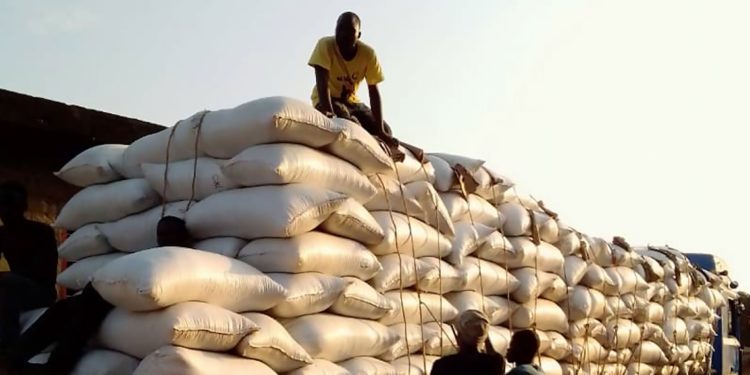Poor soil fertility meant low yields and insufficient income for soybean farmers in the West African nation of Benin. Thanks to the use of bio-fertilizers, improved using isotopic techniques, they have increased their production significantly, with the support of the IAEA in partnership with the Food and Agriculture Organization of the United Nations (FAO).
“Inoculation promotes the development of nodules at the roots and thus increases the fixation of atmospheric nitrogen. It is a cost-effective way to increase yields, while improving and maintaining soil fertility,” said Nestor Ahoyo Adjovi, Scientific Director of the National Agricultural Research Institute of Benin (INRAB).
During the same period, the cultivated area increased from 64,000 ha to 200,000 ha and yield rose from 890 kg/ha in 2009 to 1100 kg/ha in 2019. It is projected that annual soybean production will hit 341,000 tons by 2030 – a six-fold increase compared to 2009. Benin, which did not export soybeans when support from the IAEA and FAO started in 2009, now exports 40,000 tons at a value of US$ 19 million, annually.
With support from the IAEA and the FAO, researchers at the University of Abomey-Calavi in Benin, the National Agricultural Research Institute of Benin (INRAB) and several local and international NGOs have helped local farmers to increase the yields of soybean by increasing the nitrogen content of the soil through the natural process of nitrogen fixation from the air, making soybean production environmentally friendly.
To facilitate the process of increased nitrogen fixation, researchers at the University of Abomey-Calavi produced inoculum, a biofertilizer that contains microorganisms to enhance the productivity of soil and stimulate crop growth, and also test the efficacy of these bio-fertilizers before releasing them to the Ministry of Agriculture and the NGOs for distribution to farmers. Isotopic techniques were used to establish this efficacy and the ability of the plants to uptake the biofertilizer and fix nitrogen from the air.
“Traditional production practices did not allow producers to improve soybean yields above 890 kilograms per hectare, but with current improved production practices, farmers can harvest 1100 kilograms per hectare,” said Ahoyo Adjovi.
As a result, soybean production has increased from 57,000 tons in 2009 to 222,000 tons last year, and its value has grown from US$ 6.6 million to US$ 109 million, according to data from a recent industry publication
Nitrogen, a major building block of crop growth, is often the limiting factor in plant growth because of its limited quantity present in soil compared to the high demand for it from plants. “The production and deployment of the inoculum reduces the amount of nitrogen fertilizer required, which means farmers spend less on production,” said Joseph Adu-Gyamfi, Integrated Soil Fertility Management Specialist at the Joint FAO/IAEA Division of Nuclear Techniques in Food and Agriculture.
The IAEA, through its technical cooperation programme, trained about 50 scientists and technicians across 23 research sites to use isotopic technology – nitrogen-15 tracing – to identify specific varieties of soybean with high rates of nitrogen fixation and high yield. Nitrogen-15, a stable isotope of nitrogen, is used to quantify how efficiently nitrogen fertilizer is used by crops and to determine how much nitrogen crops capture from the atmosphere. Through INRAB, Benin’s Ministry of Agriculture helped to disseminate the technology and information to 15,000 to 20,000 farmers.
Towards export markets
The increased crop production not only leads to improved food security and more balanced diets, but also supports expanding Benin’s market reach. Sojagnon Association, a local NGO promoting the agricultural development of Benin by improving the value chain for soybean, and the Green Innovation Center for the Agri-Food Sector in Benin (ProCIVA) have helped bring Benin’s soybean product to export markets in Turkey and the United Arab Emirates and more recently to Belgium and Togo
“In Benin, we have a deficit in the trade balance,” Ahoyo Adjovi explained. “When we export more, we can decrease our deficit and buy more from world markets. When farmers invest efforts to produce more, poverty will decrease and livelihoods will increase.”









